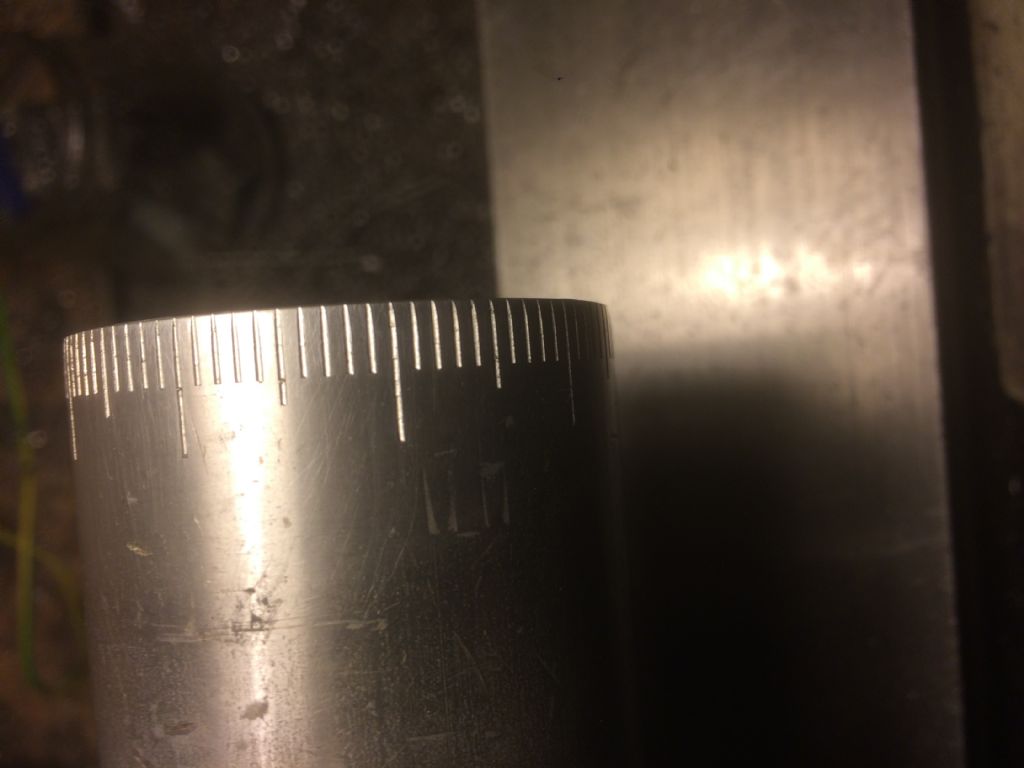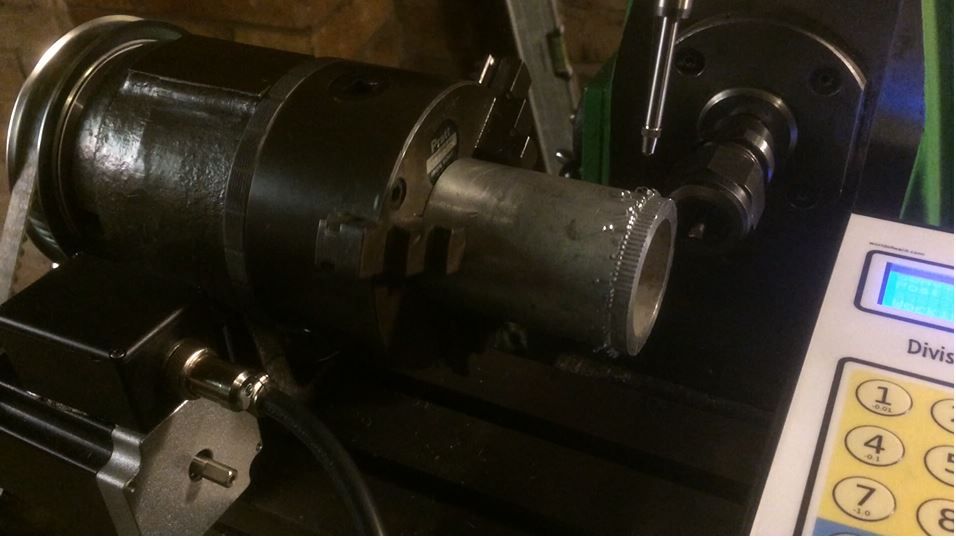A nice neat job!
The last time that I graduated dials, I was less confident, and scribed each line in turn, but essentially used the same technique.
The "engraving" tool was a broken centre drill ground to a 60 degree chisel point and held in a drill chuck on the Mill/Drill, so that the cutting edge lay along the table.. A 30 degree point would have produced narrower lines, but at the risk of the tool, being less sturdy.
The dial was going to be indexed by a Rotary Table, and division plates.
Spacers to fit against a table stop, were made up so that the lines would be of consistent length.
Having centred the dial under the spindle,,the "cuttrer" was brought into contact with the dial, before being withdrawn and lowered by 0.010"
Having set a table stop to coincide with the far side of the dial, (Some 12 mm ) a "Tens" lines was scribed right across the dial, and then withdrawn, A 8 mm spacer was inserted against the stop to limit the travel, so that the next four lines ("Ones" ) were only 4 mm long, The spacer was then replaced by a 4 mm spacer and the "Five" line scribed. The 8 mm spacer was replaced to mark the next four divisions, before the stops were removed for the next "Ten" line to be marked. The procedure was repeated, until the graduations extended all the way around the dial.
A rub with emery or a fine file removed any burrs, and after cleaning up, the dial was ready for fitment.
Howard
Howard Lewis.






